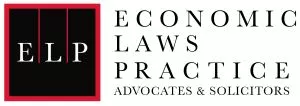Introduction and Overview
India's medical devices sector is growing fast. The market size of the medical devices sector in India was estimated to be USD 11 billion (approx. INR 90,000 crores) in 2020 with a 1.5% market share in the global medical device market. The growth of the medical device sector in India is primarily driven by a growing and ageing population, increased per capita and disposable income, demand for healthcare infrastructure, rise in diagnostic services and spread of healthcare services and insurance. This sector has become even more prominent pursuant to the support it offered to the domestic and global battle against the COVID-19 pandemic by way of large-scale production of medical devices, diagnostic kits, ventilators, tests, PPE kits, thermometers, N-95 masks etc.1
While India holds its reputation as the pharmacy of the world and the market of medical devices in India is growing rapidly, medical devices have long been in a regulatory blind spot. The National Health Policy of 2017 set out, among its many primary goals, to strengthen regulation in the healthcare sector.2 Yet, 6 years on, a global pandemic, and several major technological advancements later, the primary legislation governing pharmaceutical products and medical devices in India, still remains to be the pre-independence era Drugs and Cosmetics Act, 1940 (the 1940 Act ).
The 1940 Act did not contain a definition for medical devices till 19833 when an amendment was brought into effect to include medical devices, as notified by the Central Government, within the definition of "drug" as provided in section 3(b) of the 1940 Act. By a 2005 Order, the Central Government notified 10 medical devices as included within the definition of "drug" in the 1940 Act.4 However, for too long, India did not have a comprehensive set of rules for the sale and manufacturing of medical devices. In the absence of such rules and/or guidelines, the drugs control authorities across respective states of the country, were ambivalent on the standards for licensing medical devices that had been notified by the government under the 1940 Act.5
Regulatory Regime for Medical Devices
What is a Medical Device?
It was not till the promulgation of the Medical Devices Rules of 2017 that medical devices were defined independently. These Rules also account for different types of medical devices – i.e. the Medical Devices Rules 2017 provide separate definitions for 'active diagnostic device', 'active medical device', 'therapeutic medical device', 'custom made medical device', 'invasive device', 'investigational medical device', 'new in vitro diagnostic medical device', and 'predicate device'.
By 2017, the Government had notified 22 medical devices as "drugs" under the 1940 Act and the Drugs and Cosmetics Rules 1945. The items referred to in sub clauses (A) and (B) of the medical device definition contained in the Medical Devices Rules 2017, all feature in the 22 notified medical devices.6
Who and what regulates medical devices?
The Medical Devices Rules 2017 laid out the regulatory framework in terms of the standards and classification of medical devices. Since medical devices are notified as "drugs" in the 1940 Act, the primary body that exercises regulatory control over the import of drugs (therefore medical devices) and takes final decisions on the approval of new drugs is the Central Drugs Standard Control Organization (CDSCO).7 The CDSCO is headed by the Drug Controller General of India.
On August 29, 1997, the National Pharmaceutical Pricing Authority (NPPA) was set up as an attached office of the Department of Chemicals and Petrochemicals (now the Department of Pharmaceuticals since July 2008). The primary function of the NPPA is to implement and enforce the provisions of the Drugs Price Control Order (DPCO 13) 1995/2013 i.e. It is the aim of the DPCO 13 that essential drugs are made available to all at affordable prices. Interestingly, the DPCO is issued under the Essential Commodities Act 1955 and not the 1940 Act. However, the DPCO defers to the 1940 Act for its definition of "drug" and therefore, its ambit extends to medical devices as well.
Price Regulation of Medical Devices
The NPPA first started exercising its authority with respect to medical devices in 2017. By way of S. O. 412 (E) dated February 13, 2017 it fixed a price ceiling for coronary stents. By way of Office Memorandum dated March 10, 2017 the NPPA directed mandatory printing of MRP on all notified medical devices. Later, the NPPA exercised its price regulatory powers in respect of orthopaedic knee implants and oxygen concentrators as well.
The Ministry of Health & Family Welfare, Government of India vide Notification No. S. O. 648 (E) dated February 11, 2020 notified that medical devices intended for use in human beings or animals to be treated as Drugs, with effect from April 1, 2020. Additionally, on March 31, 2020 the Department of Pharmaceuticals issued an Order directing that all medical devices shall be governed under the provisions of the DPCO 2013.8
Recent regulatory developments
- In 2021, in light of the COVID-19 crisis, the NPPA fixed price ceilings for 5 medical devices – (i) pulse oximeter, (ii) blood pressure monitoring machine, (iii) nebulizer, (iv) digital thermometer, (v) glucometer – by invoking the provisions of paragraph 19 of the DPCO 2013. The trade margins of these medical devices could not exceed 70%.9 This MRP restriction on the said 5 medical devices has been extended from time-to-time upto 30 June 202310 and is likely to be continued thereafter as well.
- In 2022, significant amendments were introduced to the Medical Devices Rules 2017 in respect of the sale of medical devices. Specifically, the amendments provide for a process for grant of a registration certificate to sell, stock, exhibit or offer for sale or distribute medical devices. Importantly, the amendment provides that the registration certificate shall be valid in perpetuity subject to payment of registration certificate retention fee. Also, in November 2022, Schedule I of the DPCO 2013 setting out the National List of Essential Medicines was replaced with a fresh amended list.
- Close on the heel of these 2022 amendments, on April 26, 2023 the Union Cabinet approved the National Medical Devices Policy 2023. The Policy is an endeavour towards creating a "robust and streamlined regulatory framework" that ensures patient safety, encourages product innovation, reduces compliance burdens and enhances the ease of doing business and research. In particular, the National Medical Devices Policy 2023 is intended to encourage medical device manufacturing and research within the country and in turn reduce the country's dependence on importing high-end medical devices.
- On May 28, 2020 the Government introduced the Production Linked Incentives (PLI) Scheme for Medical Devices11 that proposes a financial incentive to boost domestic manufacturing and attract large investment in the medical devices segments such as oncology devices, radiology and imaging devices, anaesthetics devices, implants etc. In March 2021, the Government notified the PLI (2.0) Scheme12 whereby further incentives were given for manufacturers of in-vitro diagnostic devices.
- In May 2020, the Government also notified the scheme for "Promotion of Medical Devices Parks"13 to strengthen the infrastructure base and develop a robust manufacturing ecosystem for medical devices in the domestic market. The total financial outlay of the scheme is INR 400 Crore and the tenure of the scheme is from FY 2020-2021 to FY 2024-2025. The proposals of the State Government of Himachal Pradesh, Tamil Nadu, Madhya Pradesh and Uttar Pradesh have been given "in-principle" approval under the scheme.
Contradictions of the Medical Devices Regulatory Regime
The regulatory regime with respect to pricing and sale of medical devices presents some obvious contradictions between the push for domestic manufacturing on the one hand and the NPPA's increasing authority to regulate the prices of medical devices on the other.
The National Medical Devices Policy 2023 endeavours to facilitate Research and Development (R&D) and innovation, attract investments, develop human resources and brand promotion. It aims to do this domestically. However, at the same time, the Policy also unequivocally warns the medical device industry of the Government's plans to develop and implement a framework for coherent price regulation by duly aligning the provisions of the DPCO through the NPPA to make available quality and effective medical devices to all citizens at affordable prices.
As detailed above, the NPPA's authority over all notified medical devices has been plainly clarified. Furthermore, the NPPA has extended its price caps on various medical devices and continues to sanction such extensions from time to time. The enforcement of such price caps is bound to be a natural deterrent to manufacturers from engaging in further R&D and innovation in the medical devices space.
Recommendations/ Forward view
The regulatory regime for medical devices needs streamlining. Currently, medical devices are regulated under the provisions of (a) the 1940 Act, (b) the Drugs and Cosmetics Rules 1945, (c) the Medical Devices Rules 2017 (along with its various amendments); (d) the CDSCO, (e) the DPCO 2013; and (f) the NPPA. Streamlining the regulation of medical devices under a single regulation- possibly even a separate legislation independent of legislation related to drugs and cosmetics as some commentators have suggested14 will be a significant step in achieving regulatory clarity in the healthcare sector related to medical devices.
While today there is much reliance on imports, the goal of self-sufficiency relating to medical devices as envisaged in the Medical Devices Policy 2023 can be achieved under the 'Make in India' program only if there is an increased impetus by the Government to the medical devices industry with consistent Central and State regulations, lesser price control and further tax benefits.
The definition of Medical Devices as it stands today, covers in its ambit a wide variety of products, including but not limited to software/ health platforms. Indian companies which are manufacturing or importing electronics, which have health related features, like oxygen, blood pressure or temperature monitoring etc may be required to adhere to the licensing, quality standards and pricing requirements under the present regulatory regime, especially with the proposed enlarged scope of the NPPA to regulate Medical Devices. In any view, current Medical Devices manufacturers/ importers will need to control pricing and quality of components, given the fact that the NPPA may at any time in the recent future, issue price notifications for additional essential or life-saving medical devices.
What to look out for
- The Draft Uniform Code for Medical Device Marketing Practices:
Currently, the marketing practices of the medical device sector are being voluntarily regulated by the Uniform Code for Pharmaceuticals Marketing Practices (UCPMP). The Draft Uniform Code for Medical Device Marketing Practices has been put together and issued for comments and suggestions pursuant to the MedTech industry emphasizing the need for a separate code for medical devices. The draft Code provides guidelines for promotional material, sale representatives, relationships with health care professionals, a complaints procedure and more. However, significantly, compliance with the Code will be voluntary.
- The new Drugs, Medical Devices and Cosmetics Bill, 2022:
This draft Bill was issued for suggestions/comments/objections on July 8, 2022. The Bill provides the much-needed facelift to the 1940 Act. For starters, it provides a broader, more relevant and up-to-date definition of medical devices. However, since this Bill is a sizeable legislative endeavour, it is likely to be a while before it achieves legislative sanction and it is also likely to go through several modifications along the way, which remain to be seen.
We intend to further dissect the Draft Code and the new 2022 Bill, for its efficacy and legality, in our upcoming articles, which the readers should definitely watch out for.
Footnotes
1. Department of Pharmaceuticals Gazette Notification dated 02 May 2023 – National Medical Devices Policy 2023
2. National Health Policy 2017 pg.1
3. Act 68 of 1982, w.e.f. 01 February 1983
4. S.O. 1468 (E) dated 06 October 2005
5. http://test.pharmabiz.com/news/most-medical-devices-being-marketed-without-regulations-safeguards-in-india-37899
6. Department of Pharmaceuticals/NPPA Office Memorandum dated 10 March 2017
7. https://cdsco.gov.in/opencms/opencms/en/About-us/Introduction/
8. Department of Pharmaceuticals/NPPA S.O. 1232(E) dated 31 March 2020
9. Department of Pharmaceuticals/NPPA S.O. 2808(E) dated 13 July 2021
10. Department of Pharmaceuticals/NPPA S.O. 1518(E) dated 29 March 2023
11. Department of Pharmaceuticals Notification No. 31026/08/2020-MD dated 28 May 2020
12. Department of Pharmaceuticals Notification No. 31026/60/2020-Policy-DoP dated 3 March 2021
13. Department of Pharmaceuticals Notification No. 31026/08/2020-MD dated 28 May 2020
14. https://vidhilegalpolicy.in/research/comments-on-the-drugs-medical-devices-and-cosmetics-bill-2022/
The content of this article is intended to provide a general guide to the subject matter. Specialist advice should be sought about your specific circumstances.


